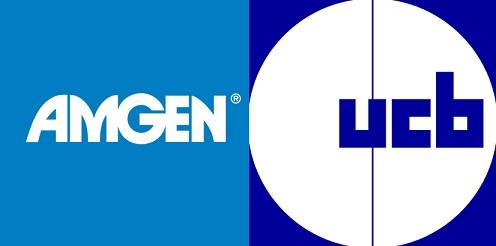 UCB and Amgen have announced results from the Phase 3 BRIDGE study showing that in men with osteoporosis, the investigational agent romosozumab resulted in significant bone mineral density (BMD) gains at the lumbar spine—and the total hip and femoral neck—compared to placebo at six and 12 months. The full findings were presented for the first time at the American College of Rheumatology (ACR) and Association of Rheumatology Health Professionals (ARHP) Annual Meeting in Washington, DC, USA, November 11-16, 2016.
UCB and Amgen have announced results from the Phase 3 BRIDGE study showing that in men with osteoporosis, the investigational agent romosozumab resulted in significant bone mineral density (BMD) gains at the lumbar spine—and the total hip and femoral neck—compared to placebo at six and 12 months. The full findings were presented for the first time at the American College of Rheumatology (ACR) and Association of Rheumatology Health Professionals (ARHP) Annual Meeting in Washington, DC, USA, November 11-16, 2016.
“Romosozumab has the ability to improve bone mass, structure and strength by both increasing bone formation and decreasing bone resorption,” say E Michael Lewiecki, principal investigator for the BRIDGE (placebo-controlled study evaluating the efficacy and safety of romosozumab in treating men with osteoporosis) study, and clinical assistant professor of medicine, University of New Mexico School of Medicine, Albuquerque, USA. “These Phase 3 findings are particularly promising as they show the clinical effects of romosozumab in men with osteoporosis – a population that is often under-recognized and under-treated for a disease that can have devastating consequences.”
The BRIDGE study involved 245 men with osteoporosis (163 romosozumab, 82 placebo) randomised 2:1 to receive either 210 mg romosozumab or placebo subcutaneously once monthly for 12 months. All subjects received daily calcium and vitamin D. The primary endpoint was met, with romosozumab demonstrating a statistically significant increase (12.1%; p<0.01) in bone mineral density at the lumbar spine (as assessed by dual energy x-ray absorptiometry) compared with placebo at 12 months. All secondary endpoints were also met with romosozumab showing a statistically significant increase in BMD at total hip (2.5%) and the femoral neck (2.2 percent) at 12 months (both p<0.01 compared to placebo). A statistically significant increase in BMD at six months was also seen with romosozumab at all sites examined compared to placebo: lumbar spine (9%), total hip (1.6%), femoral neck (1.2%; p<0.01 for all sites). The dual effect of romosozumab was reflected by an increase in P1NP (86% median increase from baseline peaking at one month), a marker of bone formation, and a decrease in CTX (31% median decrease from baseline at one month), a marker of bone resorption.
The overall incidence of adverse events and serious adverse events were balanced between treatment groups. The most frequently reported adverse events (greater than five percent in the romosozumab arm) were nasopharyngitis, back pain, hypertension, headache and constipation. Injection site reactions were reported in 5.5% of patients in the romosozumab treatment group and 3.7% in the placebo group during the 12-month period. Most injection site reactions were reported as mild in severity. The patient incidence of positively adjudicated cardiovascular serious adverse events was 4.9% (8/163) in the romosozumab group and 2.5% (2/81) in the placebo group. The subject incidence of positively adjudicated cardiovascular death was 0.6% (1/163) in the romosozumab group and 1.2% (1/81) in the placebo group.
According to a press release, UCB and Amgen plan to discuss the BRIDGE results with global regulators.












